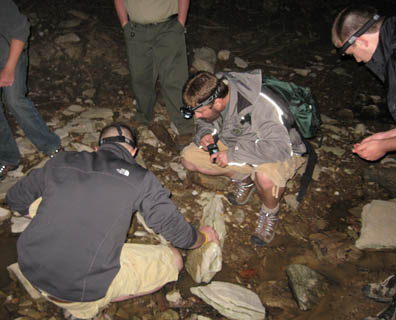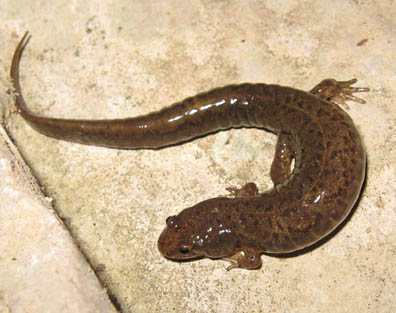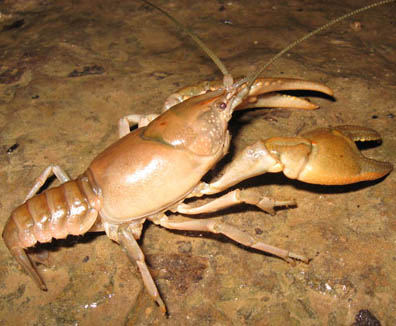
|
Night Herping
Independence High School biology teacher Scott Maretka and his students continued their quest to find Kentucky creek life. 
| Streamside Salamander The Dusky Salamander is commonly found under rocks along the edges of creeks - they can be surprisingly hard to catch. Click here to see a Dusky Salamander daytime photo 
Mr. Pinchers
| I found a mighty big crayfish.
Io
| The Io Moth has distintive "eye spots" on its hind wings, which are believed to scare off some predators.
Spring Thing
| This Kentucky Spring Salamander was the largest amphibian found on the trip.
Who's Behind the Door?
| We started out day two with a tour of Cascade Cave. This Longtail Salamander was perched on the inside of the steel door that allowed access to the cave. 
Underground Wonder
| Cascade Cave features a 30 foot underground waterfall, reflecting pool and excellent tour guide named Kenny.
Lake Room
| There are a few "rooms" within the cave. This one features a reflecting pool, which shows a mirror image of what's outside the cave. 
Bat Cave
| Although most of the caves were closed as a precaution against the bat-killing fungal infection known as white-nose syndrome, we did see Little Brown Bats and Pipistrelles.
| Ringer The first snake I found on the trip was this Northern Ringneck. Unlike most snakes that lay eggs, Ringneck Snakes have a tendency to deposit eggs in a community nest. Click here to see another Ringneck Snake photo |
